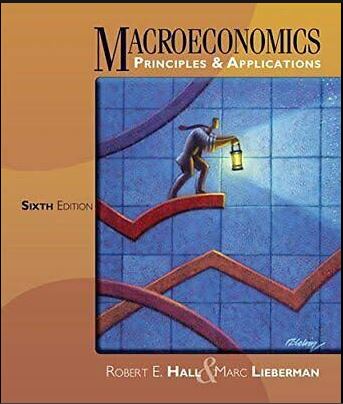
Microeconomics 6th Edition by Robert Hall, Shirley Kuiper, Marc Lieberman
Edition 6ISBN: 978-1133708735
Microeconomics 6th Edition by Robert Hall, Shirley Kuiper, Marc Lieberman
Edition 6ISBN: 978-1133708735 Exercise 8
This problem uses the data from problem 1,and the graphs you drew in problem 10. Suppose that the terms of trade end up at 4 tons of wool for 1 hand-knotted rug. Suppose,too,that New Zealand decides to export 12 million tons of wool to India.
a. How many rugs will New Zealand import from India?
b. What will be New Zealand's consumption of each good after trade?
c. What will be India's consumption of each good after trade?
d. On the PPFs you drew for problem 2,plot each country's consumption point after trade. Label it C for New Zealand,and C ? for India
Problem 1
The following table shows the hypothetical labor requirements per ton of wool and per hand-knotted rug,for New Zealand and for India.
Labor Requirements per Unit
 a. Which country has an absolute advantage in each product?
a. Which country has an absolute advantage in each product?
b. Calculate the opportunity cost in each country for each of the two products. Which country has a comparative advantage in each product?
c. If India produces one more rug and exports it to New Zealand,what is the lowest price (measured in tons of wool)that it would accept? What is the highest price that New Zealand would pay? Within what range will the equilibrium terms of trade lie?
Problem 2
Using the data from problem 1,suppose that New Zealand has 300 million hours of labor per period,while India has 800 million hours.
a. Draw PPFs for both countries for the two goods (put quantity of wool on the vertical axis).
b. Suppose that,before trade,each country uses half of its labor to produce wool and half to produce rugs. Locate each country's production point on its PPF (label it A for New Zealand,and A ? for India).
c. After trade opens up and each country completely specializes in its comparative advantage good,locate each country's production point on its PPF (label it B for New Zealand,and B ? for India)
a. How many rugs will New Zealand import from India?
b. What will be New Zealand's consumption of each good after trade?
c. What will be India's consumption of each good after trade?
d. On the PPFs you drew for problem 2,plot each country's consumption point after trade. Label it C for New Zealand,and C ? for India
Problem 1
The following table shows the hypothetical labor requirements per ton of wool and per hand-knotted rug,for New Zealand and for India.
Labor Requirements per Unit
 a. Which country has an absolute advantage in each product?
a. Which country has an absolute advantage in each product?b. Calculate the opportunity cost in each country for each of the two products. Which country has a comparative advantage in each product?
c. If India produces one more rug and exports it to New Zealand,what is the lowest price (measured in tons of wool)that it would accept? What is the highest price that New Zealand would pay? Within what range will the equilibrium terms of trade lie?
Problem 2
Using the data from problem 1,suppose that New Zealand has 300 million hours of labor per period,while India has 800 million hours.
a. Draw PPFs for both countries for the two goods (put quantity of wool on the vertical axis).
b. Suppose that,before trade,each country uses half of its labor to produce wool and half to produce rugs. Locate each country's production point on its PPF (label it A for New Zealand,and A ? for India).
c. After trade opens up and each country completely specializes in its comparative advantage good,locate each country's production point on its PPF (label it B for New Zealand,and B ? for India)
Explanation

This question doesn’t have an expert verified answer yet, let Examlex AI Copilot help.
Microeconomics 6th Edition by Robert Hall, Shirley Kuiper, Marc Lieberman
Why don’t you like this exercise?
Other Minimum 8 character and maximum 255 character
Character 255


